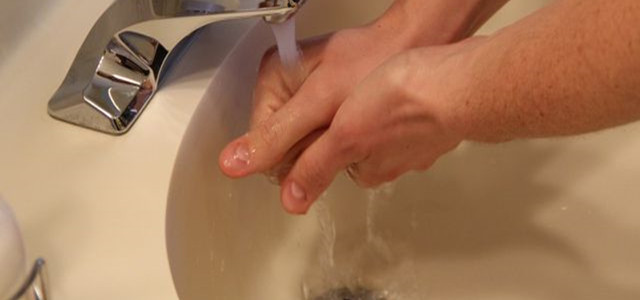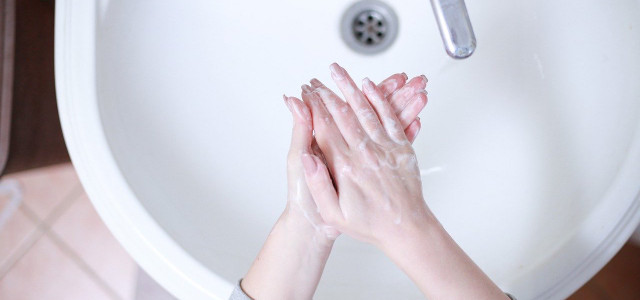Is wearing a face mask compulsory, can simple cloth face masks protect you or others from the coronavirus, and how do you make your own DIY face mask? Find out here!
Despite the controversy surrounding the mandatory use of face masks in some states of the US, the CDC recommends wearing one in order to prevent spreading the coronavirus. Since carriers of the virus may not (yet) show any symptoms, a face covering – like a simple DIY face mask – can help from transmitting it to others, especially in public areas where social distancing measures are hard to maintain, e.g. at the grocery store.
Though wearing a cloth face mask cannot guarantee protection when it comes to contracting the disease, NBC news contributor virologist Dr. Joseph Fair states that face coverings “should be a nationwide mandate”:
Currently only seven states require the use of a face mask in public: Connecticut, Hawaii, Maryland, New Jersey, New York, Pennsylvania and Rhode Island. The laws differ from state to state, some applying to anyone in a public space, some to customers and/or employees of essential businesses or users of public transportation, and some may even apply to children from the age of two. Therefore, please inform yourself as to which laws are relevant in your particular state.
Making Your Own Cloth Face Mask is Simple
The good news is: Even if wearing a mask is mandatory in your state, any face covering will do, including simple DIY face masks. Scarves, bandanas, or cloth face masks are allowed, and even recommended, in order to prevent a shortage of surgical masks for medical personnel who might need them.
There is a shortage of personal protective equipment (PPE) for medical staff, including face masks, throughout the United States. If the healthy population continues to buy medical masks, their prices will go up and the already scarce stock will be further reduced.
But there is a good alternative: DIY face masks. Making a cloth face mask yourself is not complicated at all. We’ll show you step by step and with pictures how to sew a protective mask from upcycled material yourself. You don’t eben need a sewing machine or fabric supplies and thanks to the simple upcycling technique, the instructions are suitable for beginners.
Note: Other instructions include pleats for a more comfortable fit and a wire for better protection around the nose. However, these are less suitable for sewing beginners. When wearing the cloth face mask, please note our safety instructions in the last paragraph.
DIY Face Mask: Materials
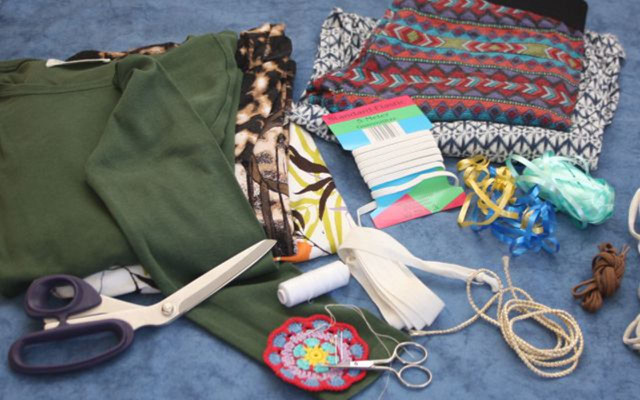
You need these materials to sew a face mask yourself:
- 1 old long-sleeved shirt or pair of leggings
- 1 pair of scissors
- 1 sewing needle
- thread
- elastic band
- pins (optional)
- measuring tape or ruler
- iron (optional)
If you don’t have any elastic band, you can alternatively use some ribbon, a cord, a string or even shoelaces.
This tutorial will show you how to make four DIY face masks out of the two sleeves of the shirt. Once you have some practice – and a sewing machine –, you can make more cloth face masks from the rest of the fabric.
Sewing Your Own DIY Face Masks: Preparations



These preparations will help you to sew the cloth face mask:
- Cut off both sleeves of the shirt, close to the shoulder/sleeve seam.
- Cut the cuffs off the two sleeves.
- Optional: Iron the fabric.
- Cut each sleeve in half lengthwise as shown in the picture. Each sleeve piece should measure approximately 9 x 6 inches. However, these are only guidelines, it does not have to be exact.
- Cut two 8-inch pieces of elastic band for each face mask. Alternatively, have two strings or shoelaces measuring 16 inches in length ready. On the picture you can see both variations.
- Place the end of the elastic band or a string along the short edge of the fabric and fold about 0.6 inches of fabric over it. Pin the hem. If you don’t have pins, you can also use needles or skip this step altogether and form the hem crease with an iron instead.
- Repeat the sixth step on the opposite side.
- Repeat points five to seven until you have prepared all your DIY face masks for sewing.
Tip: If you do not have a tape measure, no problem, just use a ruler instead. If neither is available, use your hand for measuring: The distance between the outstretched thumb and the index finger is about 6 inches. A sheet of printer paper can also help you: The width is exactly 8.5 inches.
Cloth Face Masks: Step-By-Step Sewing Instructions



Now you only need a few minutes to sew your cloth face mask:
- Cut a piece of thread and thread it into the needle.
- Tie a knot at the end of the thread.
- Pull the needle through the folded fabric. The knot holds the thread in place.
- To sew the hem, make stitches along the edge of it, leaving a small gap between each stitch. You can see what this looks like in the picture on the left.
- Sew the whole length of the hem with the same stitch. Be careful not to sew the elastic band or string.
- At the end of the hem, make two or three more stitches in the same place and tie a knot, then cut the thread.
- Sew the two ends of the elastic together. You don’t need to sew the string together, you can knot it once you have adjusted the length.
- Repeat all the steps on the opposite side of your DIY face mask.
If you like, you can now fix the elastic band or the string in place.
- Sew the elastic in place at the point where it comes out of the hem. In the picture on the right you can see what this looks like.
- Scrunch the hem together to a size of about 3 inches and then sew the elastic band in place on the other side as well.
- Repeat steps one and two on the opposite side of the face mask. This gives the face mask more stability and its typical shape.
- Repeat all steps with the other cloth face masks.
DIY Face Masks: Important Info To Consider
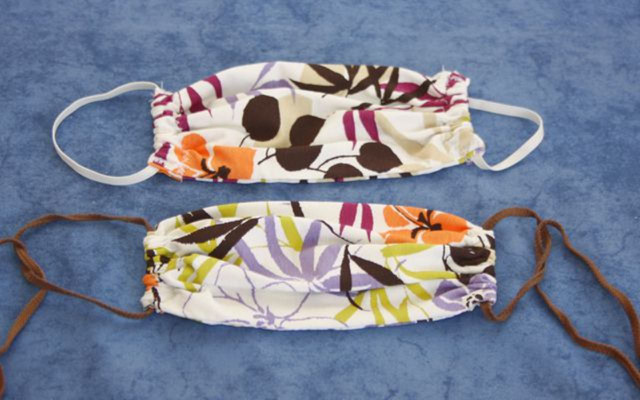


The coronavirus can be transmitted by respiratory droplets that spread when speaking, coughing or sneezing. Not every infected person shows strong symptoms; the infection can also occur without or with only mild symptoms. A face mask can prevent the droplets from being spread.
A word of caution: DIY face masks cannot completely ward off the virus from an infected person. It can reduce the risk of passing on or contracting the coronavirus through droplets but cannot completely prevent it. Beware of the false sense of security the mask might give you, continue to practice social distancing and proper hygiene.
The best protection against contracting or passing on Sars-CoV-2 is to avoid personal contact with other people, stay at home and wash your hands properly!
The CDC recommends the following for the use of cloth face masks:
- Always wear the face mask in public areas where it is difficult to practice social distancing.
- Wash your hands thoroughly before putting on, adjusting or taking off the covering.
- Wash cloth face masks regularly, i.e. daily and when dirty, in the washing machine with a mild detergent, dry on high heat and store in a clean bag or container.
- Do not share the face mask until it has been thoroughly washed and dried.
Find more variations of DIY face masks on CDC’s website here.
This article was translated from German into English by Ruth Wachsmuth. You can view the original here: Mundschutz selber machen: Nähanleitung und welchen Schutz es gegen Coronaviren bietet.
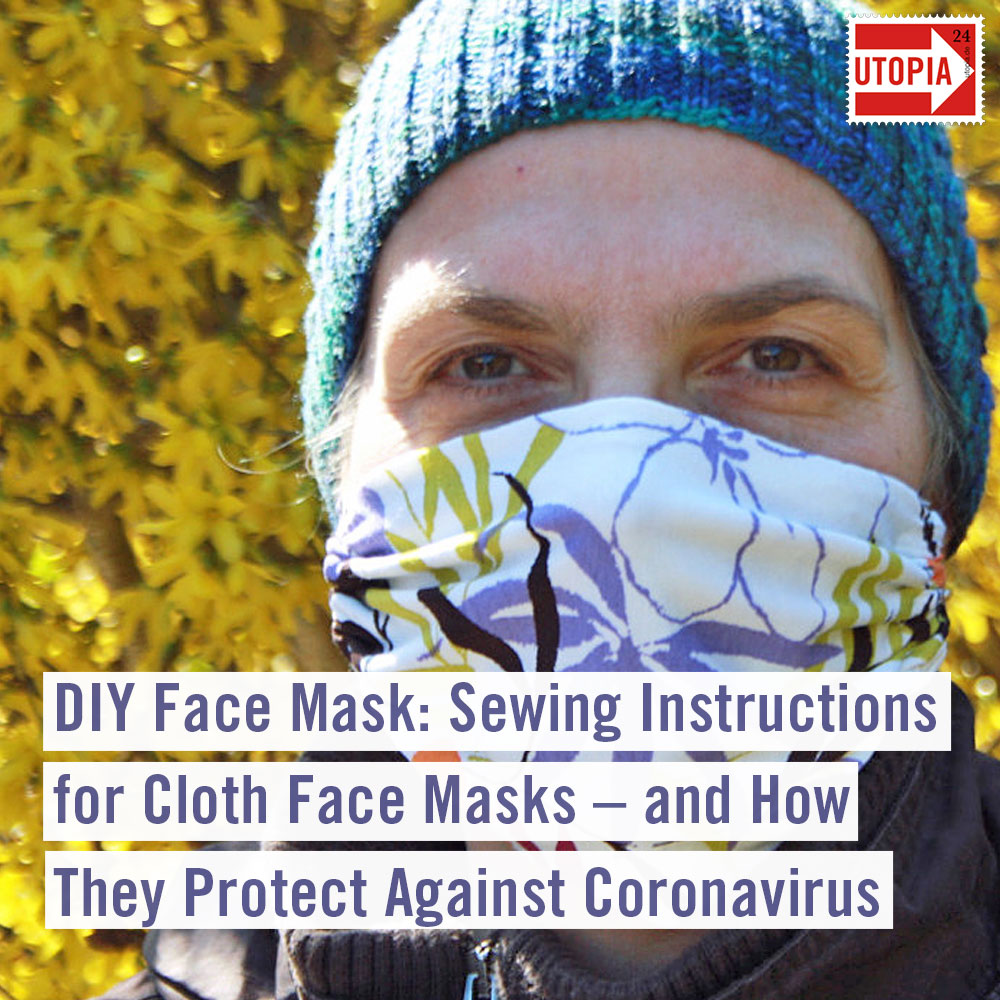
Important Information regarding Health-related Topics.
** Links to retailers marked with ** or underlined orange are partially partner links: If you buy here, you actively support Utopia.org, because we will receive a small part of the sales proceeds. More info.Do you like this post?







